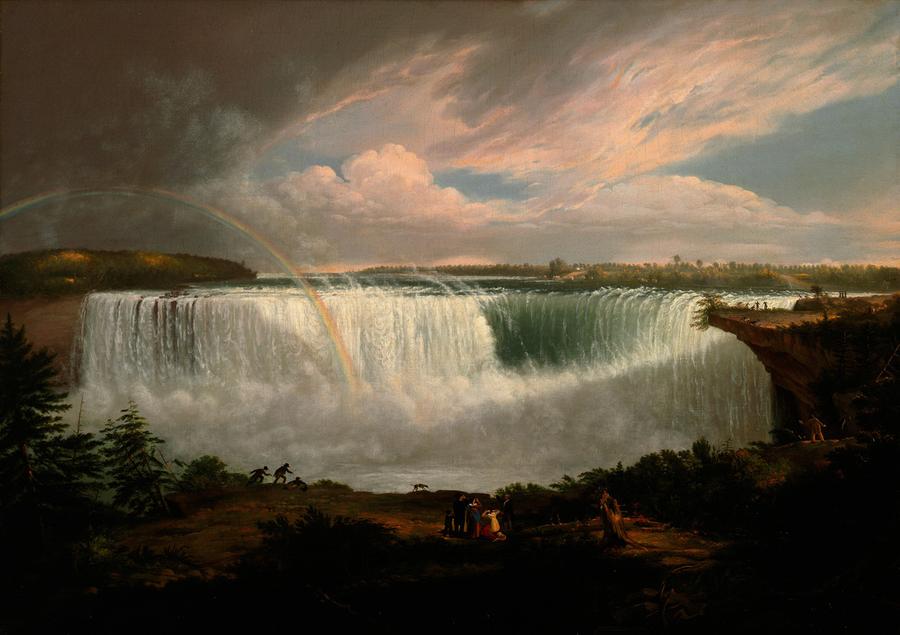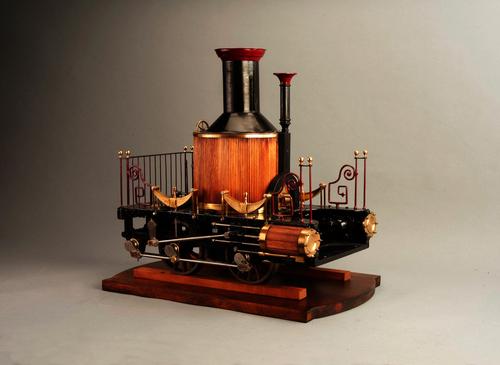"The Great American Hall of Wonders" opens at Smithsonian
- July 19, 2011 08:03

The first mass-produced American clock, a locomotive prototype, and Charles Willson Peale’s iconic self-portrait, “The Artist in His Museum,” are part of a major exhibition showcasing American innovation on view at the Smithsonian Museum of American Art until January 8, 2012.
"The Great American Hall of Wonders" assembles 161 artworks and objects related to inventions and scientific discoveries from the 1800s to show how Americans came to believe they have a “special genius” for invention.
Shown alongside 19th-century patent models, engineering diagrams, botanical illustrations and drawings of inventions, are paintings by such pre-eminent artists as John James Audubon, Albert Bierstadt, George Catlin, Frederic Edwin Church, Winslow Homer, Thomas Eakins, Thomas Moran, and Samuel Morse, the telegraph inventor.

The exhibition explores six subjects that helped shape America during the period—the buffalo, giant sequoia, and Niagara Falls represent American beliefs about abundant natural resources for fueling the nation’s progress, while inventions such as the clock, the gun, and the railroad link improvements in technology with the purposeful use of time.
“'The Great American Hall of Wonders’ examines the belief in American ingenuity that energized all aspects of 19th-century society, from the planning of scientific expeditions and the development of new mechanical devices to the painting of landscapes and scenes of everyday life,” said Elizabeth Broun, The Margaret and Terry Stent Director of the Smithsonian American Art Museum. “The museum now occupies the noble historic building that was the Patent Office’s home during the Industrial Revolution, so it is a fitting place to display this exhibition about the innovative character of Americans.”
The Smithsonian is the only venue for the exhibition, which is organized by Claire Perry, an independent curator who specializes in 19th-century American cultural history.
Peale’s iconic self-portrait “The Artist in His Museum” (1822), which greets visitors at the entrance to the exhibition, embodies the ideas set forth in the exhibition. Peale—museum founder, artist, scientist and inventor—depicts himself at the threshold of his museum, a democratic reinterpretation of an Old World “wunderkammer” or cabinet of curiosities. Its galleries were filled with portraits of the founding fathers, natural history specimens, mechanical inventions and a massive mastodon skeleton.
At a time when many Americans feared that the country would not survive the passing of the founders’ generation, Peale insisted that it was not the revolutionary generation, but rather invention itself that lay at the heart of the national project. The next generation began to define what their democratic nation would be in their scientific and artistic descriptions of America’s bounteous nature and in mechanical inventions aimed at improving their lives.

“The United States began with an act of imagination,” remarked Perry. “The topic of the exhibition is not science, art or mechanical innovation per se, but rather what Americans of the 19th century believed about those endeavors and how they deployed them to direct their lives and the nation. They considered ingenuity to be their most important asset. Over the course of the century the United States as we know it came into being, and from all indications the process was a seat-of-the-pants business. As we confront the complexities of our 21st-century stewardship, knowing where we have come from may show us where we are headed.”
On July 4, 1836, President Andrew Jackson authorized the construction of a patent office where the museum’s National Historic Landmark building is located. Construction began later that year. The building was designed to celebrate American invention, technical ingenuity and the scientific advancements that the patent process represents. The museum’s building was always intended for public display of patent models that were submitted by inventors. By the 1850s, more than 100,000 people each year visited the building, which became known as the “temple of invention,” to see the designs that filled display cabinets in the exhibition galleries. In addition to patent models, the government’s historical, scientific and art collections were housed on the third floor. The Patent Office occupied parts of the building from 1840 to 1932.
An illustrated companion book, The Great American Hall of Wonders: Art, Science, and Invention in the Nineteenth Century accompanies the exhibition. It is written by Claire Perry and co-published by the museum and London-based publisher D Giles Limited. It is available in the museum store and online (hardcover, $65; softcover, $45).







_(Medium)100x100_c.jpg)












